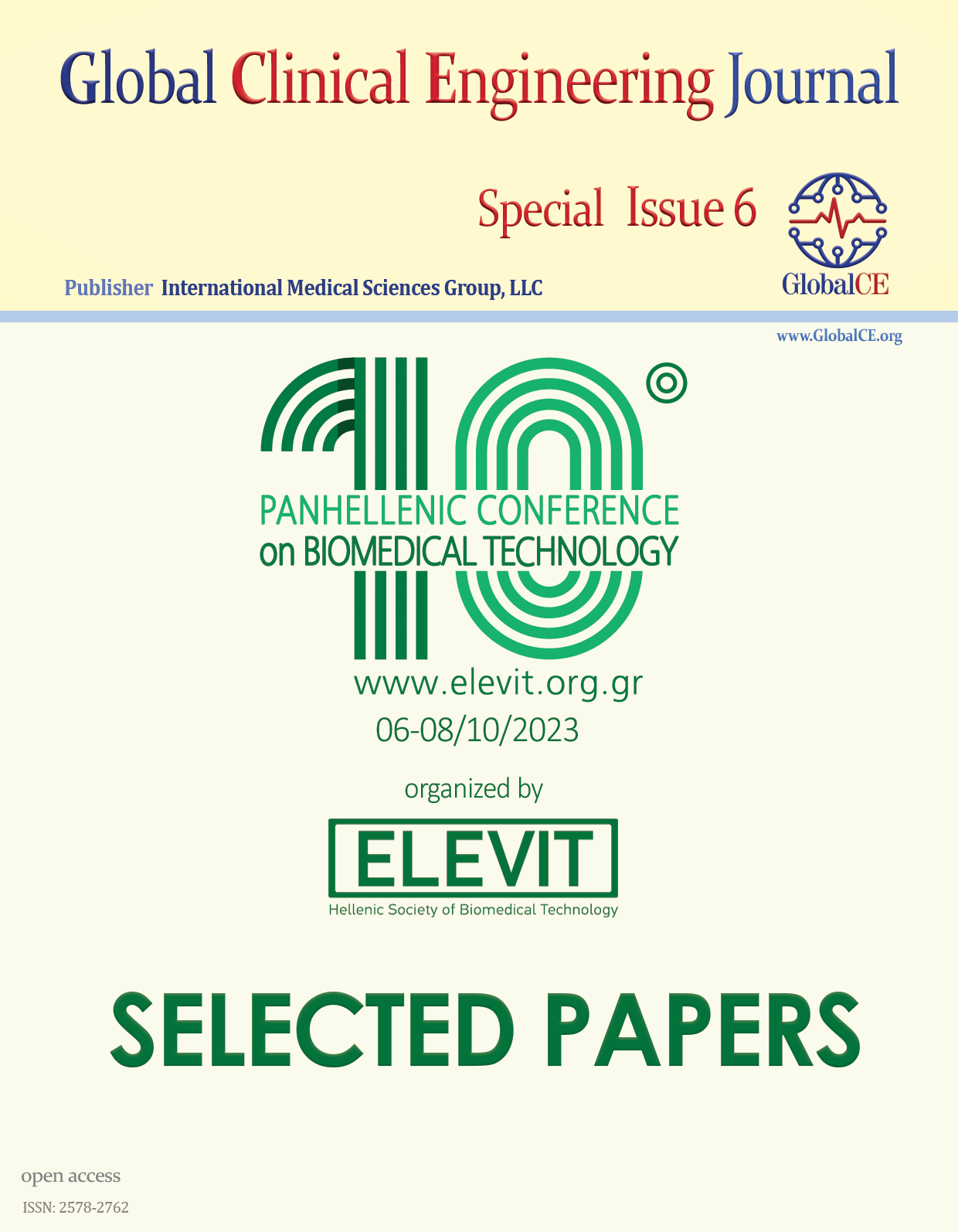Improvement of Aortic Valve Stenosis Classification in Patients through Computational Fluid Dynamics Model
Main Article Content
Keywords
Aortic Valve Stenosis, Patient-Specific Modeling, Stenosis Categorization, Leaflet Effects, Pressure Drop, Maximum Velocity, Hemodynamic Flow Field, Computational Fluid Dynamics
Abstract
Aortic valve stenosis (AS) is a common and severe valvular disease where accurate assessment is essential for determining prognosis and treatment. Current echocardiographic methods mostly rely on the simplified Bernoulli equation (SB), which approximate the peak pressure drop (ΔP), risking to poor stratification, especially for low-flow low gradient patients. This study examines the capabilities of combining computational fluid dynamics (CFD) and imaging techniques for better stratification of AS patients. Patient-specific geometries of the aortic valve, ascending aorta, and left ventricular outflow tract were reconstructed from CT and echocardiography data during peak systole. Inlet velocity boundary conditions based on ultrasound data enabled transient flow simulations. Blood flow was modelled as laminar and Newtonian, with the geometry discretized for computational efficiency without loss of accuracy. Validation against echocardiography data showed a 4% deviation in velocity predictions. Results indicated that ΔP and maximum velocity (Vmax) are strongly influenced by AVA size, while leaflet geometry affects flow jet location. The CFD model revealed that SB overestimates ΔP in non-severe AS, potentially leading to misclassification. By combining CFD with precise imaging, detailed hemodynamic insights can be achieved, addressing the limitations of conventional methods and improving patient stratification for treatment.
Downloads
Abstract 693 | PDF Downloads 102
References
[2] RING, Liam, et al. Echocardiographic assessment of aortic stenosis: a practical guideline from the British Society of Echocardiography. Echo Research and Practice, 2021, 8.1: G19-G59.
[3] BAUMGARTNER, Helmut, et al. “Overestimation” of catheter gradients by Doppler ultrasound in patients with aortic stenosis: a predictable manifestation of pressure recovery. Journal of the American College of Cardiology, 1999, 33.6: 1655-1661.
[4] CARABELLO, Blase A.; PAULUS, Walter J. Aortic stenosis. The lancet, 2009, 373.9667: 956-966.
[5] HOEIJMAKERS, M. J. M. M., et al. Estimation of valvular resistance of segmented aortic valves using computational fluid dynamics. Journal of biomechanics, 2019, 94: 49-58.
[6] WEESE, Jürgen, et al. CFD‐and Bernoulli‐based pressure drop estimates: a comparison using patient anatomies from heart and aortic valve segmentation of CT images. Medical Physics, 2017, 44.6: 2281-2292.
[7] STEWART, Sandy FC, et al. Assessment of CFD performance in simulations of an idealized medical device: results of FDA’s first computational
interlaboratory study. Cardiovascular Engineering and Technology, 2012, 3: 139-160.
[8] Yang CS, Marshall ES, Fanari Z, Kostal MJ, West JT, Kolm P, Weintraub WS, Doorey AJ. Discrepancies between direct catheter and echocardiography-based values in aortic stenosis. Catheter Cardiovasc Interv. 2016 Feb 15;87(3):488-97.






